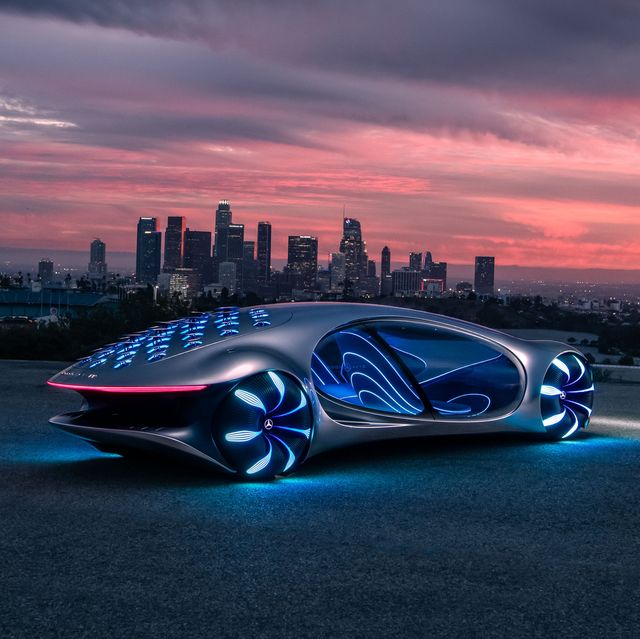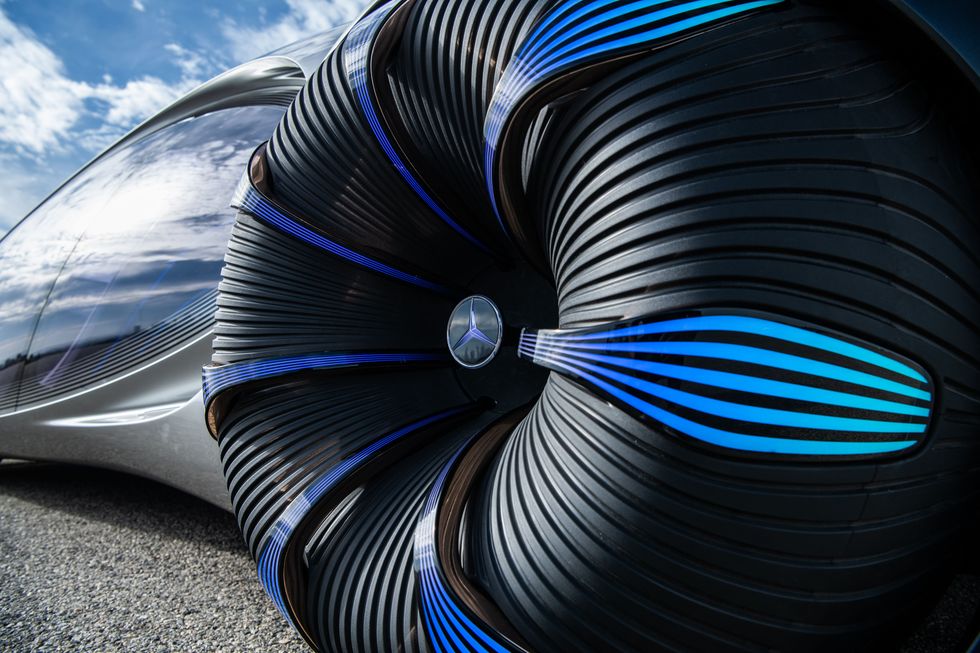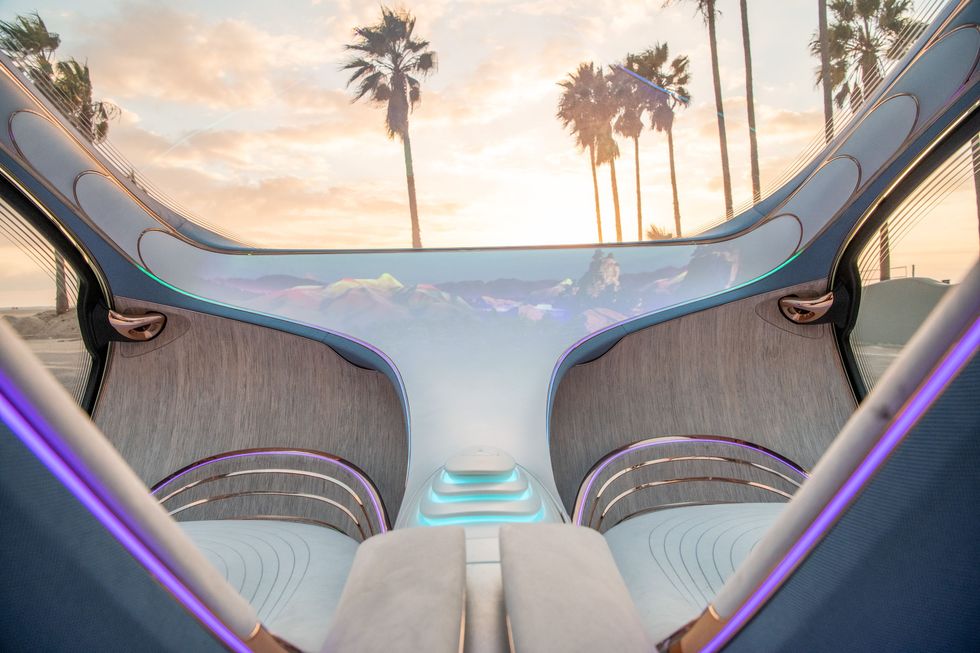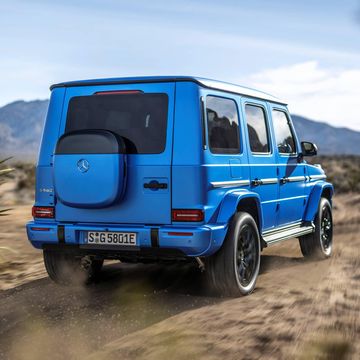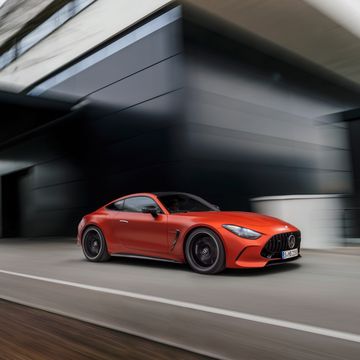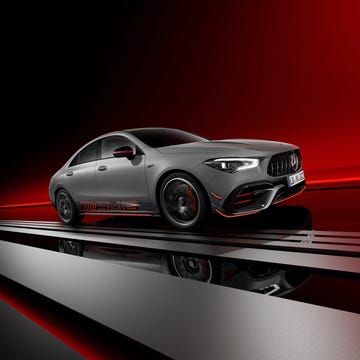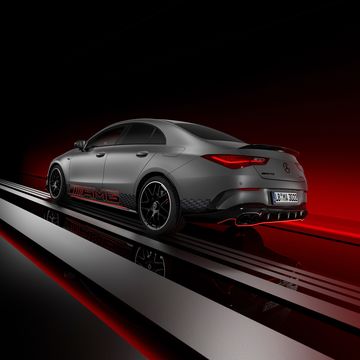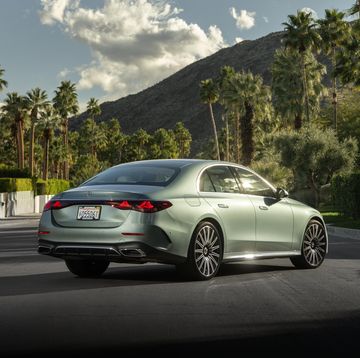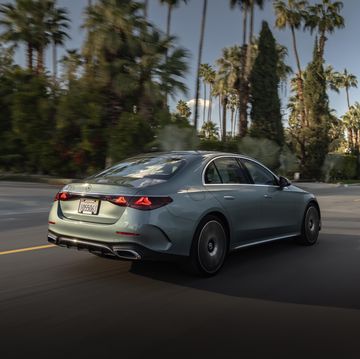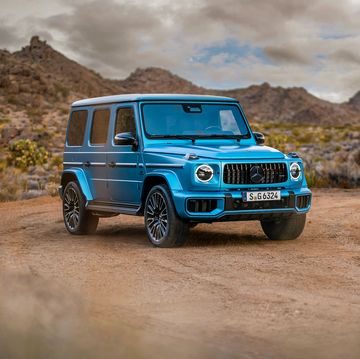- Mercedes’ latest Vision Concept highlights environmental compatibility, just like they have on the moon Pandora in the upcoming sequel, Avatar: The Way of Water.
- The electric car is powered by a “compostable” battery devoid of rare earth elements, and has vegan seat cloth.
- We drove it, albeit very slowly, as a proof of concept, so to speak.
The 2009 science fiction movie Avatar, which takes Dances With Wolves to another planet and dives in, doesn’t have any conventional four-door sedans in it—certainly not any made by Mercedes-Benz. But that didn’t stop the German brand from making a conventional four-door sedan that could have been in the movie. Or would at least fit in with the movie’s ethos. So they did. And I drove it.
“Mercedes-Benz Vision AVTR—inspired by (the movie) Avatar—is the result of an unprecedented global partnership between one of the most innovative brands in the entertainment industry and the most valuable luxury automotive brand in the world,” Mercedes said in a statement at the car’s release.
Mercedes and Lightstorm Entertainment are the two creative forces behind the car you see here, which debuted at CES two years ago. You already know Mercedes, which is making the transition from 140 years of internal-combustion power to the next 140 or so years of electric propulsion. Lightstorm is the movie production company that made the Hollywood blockbuster Avatar, and has just finished the sequel Avatar: The Way of Water.
The Avatar movies take place on the extrasolar moon Pandora, a once-paradisiacal place where tall blue human-like creatures live in perfect harmony with their environment. The idea with the car is that it, too, will live in harmony with its planet. (Work with me on this, you cynics.) The concept car is electrically powered, but not by batteries that contain any precious metals, for instance.
“(It’s a) particularly powerful and compact high-voltage battery,” Mercedes claims. “For the first time, the revolutionary battery technology is based on graphene-based organic cell chemistry and thus completely eliminates rare, toxic, and expensive earths such as metals. Electromobility thus becomes independent of fossil resources.”
Not a lot of specifics are given about the battery chemistry, but it’s just a concept—you could say it runs on good will and marketing and be technically correct. The seat backs are made from recycled ocean plastics; the floor mats are made of fast-growing reed-like material called karuun, which is similar to that found in wicker chairs, and the seat surfaces are “vegan” (just like Avatar director James Cameron!).
The idea was not just to make an Avatar-themed concept car, but to use the environment portrayed in the movie and consider how such an environment would influence car design in the future.
“During this project, we were thinking about what could be the future of sustainable mobility,” said Zane Amorales, leader of the advanced user-experience team at Mercedes-Benz. “How could we get ourselves inspired by the Avatar movies? Well, one of the main themes is this harmony between the Navi, which are these blue figures, the creatures and nature, with, for instance, these Banshee dragons, and their environments. And taking that thinking, we looked at how could we apply that to our cars, which was built with highly advanced technology. But then how could we make this advanced technology almost more natural, more human-focused. And then that’s how we came up with this concept.”
No matter how pie-in-the-sky it may be, the concept is bristling with ideas. The balloon tires are polyurethane and all four of them turn up to 30 degrees, allowing the AVTR concept to crab walk, perhaps the better to creep about on the forest floor. Mercedes say the tires are inspired by the wood sprites in Avatar. When you approach the AVTR concept, it lights up, like a puppy glad to see you. The 33 “bionic flaps” on the deck lid flip up and down like gills, as if the AVTR were breathing—turns out the flaps tilt back and are blue when the car’s accelerating, then turn red and tilt forward when braking. Lighted “digital neurons” flow out over the rear valence panel, moving faster as the car speeds up. It’s loaded with party tricks.
But how does it drive? Like a concept car. I never went faster than a slow walking pace. You can’t complain about the workability of features on a concept car. They’re all just ideas.
Open the doors and an electric motor hesitatingly chugs and cranks the huge glass up and forward (like a BMW i8). Slide into the vegan seat and six different projectors inside blend seamlessly into one big screen across the dash and center console. On the center armrest, the joystick knob controls driving (like the 1992 Saab Drive-By-Wire Concept, or Big Daddy Roth’s Beatnik Bandit). Push it forward and the car moves forward, back and it slows, then reverses. Push it diagonally to get that crab walk.
Being a concept, one which we are happy just to be allowed in, it’s neither smooth nor fast. The combined output of the four electric motors is said to be 469 hp, though that may be theoretical at this point. Under way, the AVTR creaks and hesitates, never surpassing a walking pace. The size of the glass roof would make the interior very hot on any planet, given its potential for solar gain.
So which of these ideas will see production? Who knows? The main point seems to be that Mercedes wants you to know it plans to become more eco-conscious in the coming years, just like those blue people on the moon Pandora.
“The relationship was really great,” said Lightforce producer Jon Landau of the time spent working with Mercedes on the concept. “It starts with Avatar as a movie, across all the things we do. It has something that a lot of movies don’t have, which is an ethos. We believe these movies are about something, that they challenge us to look at our world a little bit differently, to understand that our actions have an impact on people around us and the world around us. We were looking for partners who share in that same type of ethos. I think Mercedes, and (Mercedes chief designer) Gorden (Wagener) and all the way up to (Mercedes CEO) Ola (Källenius), who we’ve dealt with, really have a vision for a sustainable future.”
So have a look at the photo gallery and see which sustainable features you’d like to see in your next Mercedes. Or maybe your grandkids’ next Mercedes.
The Avatar sequel, by the way, opens this weekend in wide release.

